HEART COHERENCE BREATH:
BREATHE NOW:
- Inhale = 5 seconds
- Subtle Pause
- Exhale = 5 seconds
- Subtle Pause
- Repeat
- Do this for 5 minutes
TECHNIQUE:
- Posture: You can do this seated upright or standing. Be straight and strong, but relaxed and at ease. Standing and seated postures are more effective at creating heart coherence than lying down postures. However, I have personally had great results when doing this lying down.
- Breathe in through your nose and focus on sending the breath down into your belly
- Breathe out through your nose
- Keep the pauses subtle, almost imperceptible.
- Be mindful of each breath. Focus 100% on the subtle sensations of breathing. It is not a thinking process, it is a feeling process. This is how we access our unconscious autonomic nervous system and take control of so-called involuntary functions.
REFLECT:
Observe the changes inside. Compare how you felt before breathing and how you feel now after breathing. What has changed? There are often changes at minute 1, 2, and 3 already!
WHAT IS HEART COHERENCE?
MEANING OF COHERENCE:
Coherence means to be united or in a process of forming a whole. When a person is coherent with language, they express their thoughts in a clear and calm way, so that others can understand what they are expressing. They are bringing their internal world to the outer world and making a connection, a type of harmonizing or resonance between themselves and others.
Coherence Synonyms: consecutive, cohesive, comprehensible, intelligible, consistent, complete, sensible, compact, logical, close
Coherence Antonyms: in-consecutive, rambling, disunited, inconsistent, discursive, loose, silly, illogical, aberrant
HEART COHERENCE:
A healthy heart is always adjusting to the internal and external environment, it is resilient, responsive, and adaptive to each moment. It’s alive. The heart accelerates and decelerates as it adapts moment to moment to our internal and external environments. It is like the dreamiest dance partner, able to adjust and balance the outer and inner worlds. That bridge enables a sense of flow, harmony, presence, grace and coherence between inside and outside. Heart Coherence is a specific state of increased heart rate variability induced by paced breathing. It represents inner harmony and balance and it results in many beneficial effects on health and well-being.
HEART RATE:
Heart Rate is a measure of the number of beats per minute.
HEART RATE VARIABILITY:
Heart Rate Variability measures the variation of time between heart beats. The heart accelerates and decelerates as it adapts moment to moment to our internal and external environments. When we breathe in, our heart speeds up. When we breathe out the heart slows down. The heart’s ability to accelerate and decelerate in relation to changes in your internal and external environment is called Heart Rate Variability. The range of this variability reflects your capacity to adapt and cope with change. A high level of HRV indicates that the Ventral Vagus is active and results in a flexible autonomic nervous system and the ability to adjust to the demands of daily living. High HRV is linked to longevity, it is inversely proportional to stress. The more stressed you are, the less your heart speeds up and slows down with every breath. The less stressed you are, the greater your range of HRV. (We want a high HRV!)
Note: Where sympathetic and dorsal vagal states activate an either/or experience constricting ability to see beyond limited options, the ventral vagal state brings alive the expansive world of both/and that is filled with possibilities and choices.
HEART RESONANCE:
Slow paced breathing increases HRV. Heart coherence is a specific state of increased heart rate variability induced by paced breathing. Heart resonance is a specific state of heart coherence attained when breathing consciously at a rate of 6 breaths per minute (about 5 second inhales and 5 second exhales). Heart resonance is produced in as little as 5 minutes.
BENEFITS:
- Studies show measurable benefits with just five minutes of paced breathing at a rate of six breaths per minute, three times per day. Reduced heart rate, blood pressure and cortisol levels by 20 percent!
- You get an increase in oxytocin, dopamine, serotonin and in the brain alpha waves. These benefits you can get from just one 5 minute session and they last for up to 4 hours or more.
SUGGESTED STRUCTURE:
A breathing practice is much more effective when it becomes a daily ritual, like showering or brushing your teeth. That’s what produces the permanent, ongoing benefits, and it’s how we produce higher levels of fitness and performance, a healthier heart and a longer life. I’d suggest doing 3 sessions per day or more!
SESSIONS:
SESSION 1:
Do your first round as soon as you wake up in the morning, before doing anything else. Before you even open your eyes. Before drinking coffee / having breakfast etc.
SESSION 2:
4 hours later, just before lunch. This midday session clears away stress and rebalances the nervous system after a hectic morning. It prepares your system for digestion and will help prevent mid-afternoon drowsiness.
SESSION 3:
At the end of your workday, perhaps in your car as you drive home or before starting your evening. Use the practice to help you shift from work mode to your other life.
OR MORE:
- To fall asleep
- To fall back asleep in the middle of the night
- As a way to bring a group of people together into a feeling of “group heart”
- Heart Coherence affects the people and animals around you. It is an amazing way to harmonize the nervous systems of people and animals around you. By changing your vibe you can bring about a state of coherence in others. Try it in line, in a crowd, in an upsetting conversation, or with someone who is having a hard time settling down and see what happens! (When I do this breath pattern in the woods animals come really close!)
JUST IN CASE YOU’RE INSPIRED AND WANT TO DIG IN DEEPER:
“The magnetic fields produced by the heart are involved in energetic communication, which we also refer to as cardioelectromagnetic communication. The heart is the most powerful source of electromagnetic energy in the human body, producing the largest rhythmic electromagnetic field of any of the body’s organs. The heart’s electrical field is about 60 times greater in amplitude than the electrical activity generated by the brain. This field, measured in the form of an electrocardiogram (ECG), can be detected anywhere on the surface of the body. Furthermore, the magnetic field produced by the heart is more than 100 times greater in strength than the field generated by the brain and can be detected up to 3 feet away from the body, in all directions…We have found there is a direct relationship between the heart-rhythm patterns and the spectral information encoded in the frequency spectra of the magnetic field radiated by the heart. Thus, information about a person’s emotional state is encoded in the heart’s magnetic field and is communicated throughout the body and into the external environment.” – Heart Math Institute



0 Comments